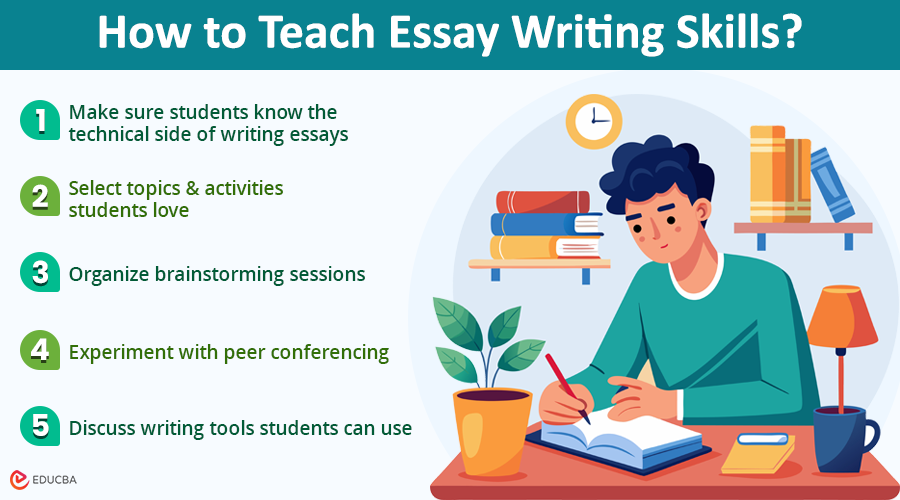
Why Teach Essay Writing to Students?
Modern students live amidst rapid communication and information overload. They are usually reluctant to write and consider writing skills unnecessary and even old-fashioned. With the rise of social media, texting, and emojis, writing is down to abbreviated forms and casual language. However, the ability to articulate thoughts clearly remains crucial for both academic and professional journeys. According to recent studies, only about 27% of middle and high school students in the US are proficient in writing. It means they have a serious gap in essential literacy skills. That is why we need to teach essay writing to today’s students to encourage them to write more and improve their outcomes.
Why are Writing Skills Important?
Digital communication is convenient and accessible. However, essays, reports, and other forms of written communication develop qualities that you can not acquire through digital interactions.
Writing power is imminent because:
- Writing helps students understand language mechanics and improves grammar, syntax, and overall text perception.
- Writing forces students to organize their thoughts, analyze information, and present clear arguments.
- Basic writing exercises expand vocabulary, improve sentence construction, and teach correct spelling.
- Strong writing skills are a must-have for academic achievement.
- It allows students to express their thoughts and develop a unique style and voice.
How to Teach Essay Writing?
Teachers often struggle with student’s writing assignments. However, a slightly different approach to essays may completely change the students’ attitudes. Here is how you can make a writing process more appealing to them.
#1. Make sure students know the technical side of writing essays
Students need to know the basics of grammar, punctuation, and sentence structure. They also need to know the key components of an essay – introduction, body paragraphs, and conclusion. Take time to explain that essays come in different formats depending on specific requirements. Devote some time to practicing these technical aspects in the classes through exercises and feedback.
Experts from Ivory Research suggest a writing model based on the following questions:
- Who are you writing for?
- What message are you trying to convey?
- What are the main ideas of your message?
- What is the best outline for your essay?
#2. Select topics and activities students love
Let your students choose topics they are interested in. Analyze their age, hobbies, and even modern trends to find ideas. This approach will immediately improve motivation and writing quality. Encourage students to explore and share their passions. Start by offering a range of topics and gradually narrow them down.
The same goes for writing activities and exercises. Check what your students enjoy best—group discussions, blogging, creative writing prompts, and collaborative writing projects. It will make the writing process less monotonous and encourage active participation.
#3. Organize brainstorming sessions
It is an effective way to help students generate ideas and prepare for writing. Involve them in discussions about various writing styles, techniques, and elements. You can use brainstorming methods like mind mapping, listing, and freewriting to guide them. Encourage them to write down all their thoughts, even if they seem rough.
Group brainstorming can also be helpful, as students share their own ideas and learn from others. It is like creating a draft for a future essay. You may even think of ready-made prompts to help them explore different viewpoints and aspects of their topics.
#4. Experiment with peer conferencing
This strategy aims to teach your students to identify strengths and weaknesses in writing. Let them collaborate and provide feedback on each other’s writing. Provide guidelines or checklists they can use for the evaluation. This exchange of ideas can greatly improve writing quality. Students feel more responsible about their work when they know that their peers will be reviewing it.
Create a structured peer review worksheet with specific questions, such as “Does the introduction clearly state the thesis?” or “Is the essay well-structured?” It helps focus the feedback and makes it more effective.
#5. Discuss writing tools students can use
Technology can help a lot with writing. It is not about using AI-based tools to generate content. Introduce your students to digital tools like word processors or grammar checkers. These tools help students find errors. Platforms like Google Docs are great for collaborative writing and getting real-time feedback. Online resources like Purdue OWL offer detailed guides on writing mechanics and styles. Do not forget about multimedia elements like images or videos, which can enhance their essays, especially for digital or multimedia projects.
Final Thoughts
The above strategies turn writing into a game. The more unconventional you manage to make it, the more students will like it. Don’t forget about feedback and incentives. Create an environment where students do not feel uncertain about sharing their work. You may even start a class blog where everyone is free to add content. Once you are able to make your students confident, you will no longer have to compel them to write.
Recommended Articles
We hope these strategies help you teach essay writing skills to students. Here are some other resources for teachers that you can view.
